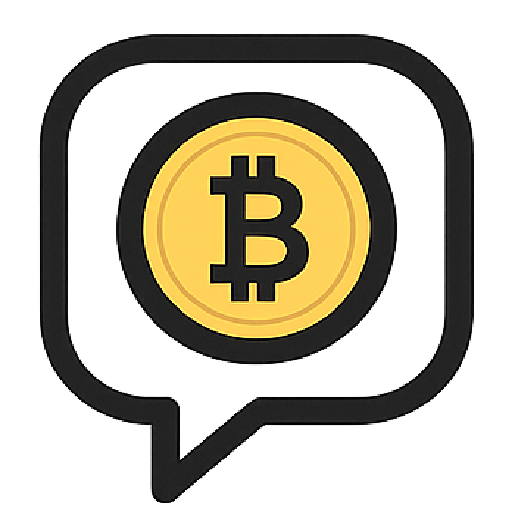
Introduction:
The cryptocurrency world is filled with new technologies, strange acronyms, and fast-changing trends. For beginners, navigating this space can feel like learning a new language. This article explains the most important crypto terms and concepts — from the basics like “wallet” and “blockchain” to more advanced ideas like “DeFi,” “DAO,” and “rug pull.”
Whether you’re just starting out or refreshing your knowledge, this glossary is your essential guide to the language of crypto.
🔤 A to Z: Key Crypto Terms Explained
🔐 Address
A string of letters and numbers used to send and receive cryptocurrencies. It’s similar to an email address — if someone wants to send you Bitcoin, they’ll need your Bitcoin address.
🪂 Airdrop
A distribution of free tokens or coins to wallet addresses, often used as a marketing strategy or to reward early adopters.
🌐 Altcoin
Short for “alternative coin.” Refers to any cryptocurrency that is not Bitcoin. Examples include Ethereum, Solana, Cardano, and thousands of others.
📈 ATH (All-Time High)
The highest price a coin or token has ever reached.
🐻 Bear Market
A prolonged period where crypto prices are falling or stagnant. Often driven by fear, negative news, or broader economic issues.
🐂 Bull Market
A period of rising prices and optimistic sentiment, often leading to strong buying momentum across the crypto market.
🧾 Blockchain
A decentralized digital ledger where all transactions are recorded across a network of computers. Every block contains a list of transactions and is linked to the previous one — hence the term “block-chain.”
🪙 Coin vs Token
A coin operates on its own blockchain (e.g., Bitcoin, Ethereum).
A token is built on an existing blockchain, like ERC-20 tokens on Ethereum.
🧊 Cold Wallet
An offline wallet used to store cryptocurrency securely. Examples include hardware wallets like Ledger and Trezor. Less convenient, but much safer from online hacks.
🧠 DAO (Decentralized Autonomous Organization)
A community-led organization with no central authority, managed by smart contracts and token-based voting. Decisions are made collectively.
💸 DeFi (Decentralized Finance)
An ecosystem of financial applications built on blockchain that allows users to lend, borrow, trade, and earn interest without banks or intermediaries.
🔄 DEX (Decentralized Exchange)
A platform that allows peer-to-peer crypto trading directly from wallets. Unlike centralized exchanges (CEXs), DEXs do not hold your funds.
⚠️ FOMO (Fear of Missing Out)
A psychological reaction that causes people to buy assets due to fear they’re missing a big opportunity — often leads to bad timing and losses.
🤯 FUD (Fear, Uncertainty, Doubt)
Negative or misleading information spread to create fear in the market. Often used to manipulate prices or attack projects.
💰 Gas Fees
Transaction fees paid to miners/validators for processing operations on a blockchain, especially on Ethereum. High gas fees can occur during network congestion.
🛠 Hash
A cryptographic function that converts input data into a fixed-length string. Every transaction and block on the blockchain is hashed.
🙋 HODL
A misspelling of “hold” that became a meme. It now means holding onto crypto long-term, regardless of price movements.
🌡 Hot Wallet
A wallet connected to the internet (e.g., mobile wallet, web wallet). Convenient but more vulnerable to hacking.
🧪 KYC (Know Your Customer)
A verification process required by exchanges and services to comply with regulations. Users must submit ID documents to trade or withdraw large amounts.
💧 Liquidity
How easily an asset can be bought or sold without affecting its price. More liquidity means easier and fairer trading.
🧮 Market Cap
Short for “market capitalization,” calculated as price × circulating supply. Often used to rank crypto projects.
⛏️ Mining
The process of validating transactions and adding them to the blockchain (Proof-of-Work). Miners receive rewards for their work, such as new BTC.
🖼 NFT (Non-Fungible Token)
A digital asset representing ownership of a unique item, such as art, music, or virtual real estate. NFTs are typically stored on blockchains like Ethereum or Solana.
🛑 Private Key
A secret alphanumeric code that gives you full control of your crypto. If someone else gets your private key, they can steal your funds.
🔓 Public Key
A derived key from your private key, which is shared publicly and used to receive funds.
🧼 Rug Pull
A scam in which a crypto project suddenly withdraws all funds and disappears. Common in shady DeFi projects.
📜 Smart Contract
Self-executing code stored on the blockchain that automates transactions and logic without middlemen. Used in DeFi, games, NFTs, and more.
⚖️ Stablecoin
A cryptocurrency pegged to a stable asset, such as the US dollar. Examples include USDT, USDC, and BUSD. Used to avoid volatility.
💼 Wallet
A tool for storing, sending, and receiving crypto. Wallets can be:
Hot wallets: online
Cold wallets: offline (more secure)
🐋 Whale
An individual or entity that holds a large amount of crypto. Their trades can influence the market.
📄 Whitepaper
A document that outlines a project’s goals, technology, and roadmap. Always read the whitepaper before investing in a new coin or token.
🎯 Final Words
Learning crypto vocabulary is your first step toward understanding the market and avoiding common mistakes. As the space continues to grow, so will the number of terms. Stay informed, stay curious, and always DYOR (Do Your Own Research).




